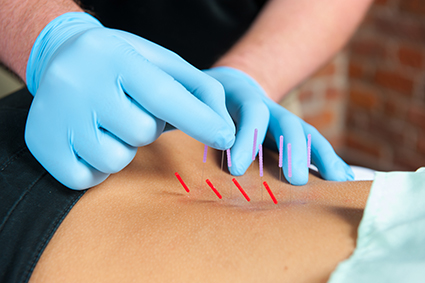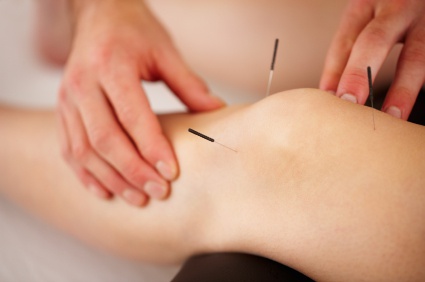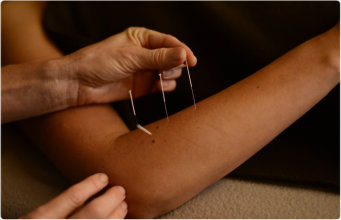



Functional Dry Needling is a mechanical-device assisted manual therapy technique within the scope of physical therapy practice. It is a skilled intervention that uses a thin filiform needle to penetrate the skin and stimulate underlying myofascial trigger points, muscular and connective tissues for the management of neuromusculoskeletal pain and movement impairments. It is used in conjunction with traditional physical therapy.
The needles used are typically much smaller than hypodermic needles, and are solid rather than hollow, with a rounded rather than a beveled tip with the cutting edge of a hypodermic needle. Dry Needling is different than acupuncture with regards to the evaluation tools used, the assessment, the application, and the overall intended goal.
Increased range of motion, decreased pain, and restoration of function.
The Federation of State Boards published a paper that suggests there exists a historical basis, educational foundation, training, and supportive scientific evidence to support the use of dry needling by physical therapists, even though it is not an entry-level skill and should require additional training (FOSB, 2010).
The American Physical Therapy Association, the professional organization for PTs in the United States, published a paper asserting that physical therapists are appropriate practitioners of dry needling, in part due to the educational foundation provided thought the course of study inherent in the doctoring profession (APTA, 2012)
Due to variance in regulatory structure and practice acts from state to state, there is no uniform consensus among the states with regard to this topic, and so practitioners must refer to the practice acts in their state. Currently therapists in 26 jurisdictions (50 states + PR, USVI, and DC) are specifically permitted to preform, and not prohibited in 2, and are prohibited in 9. 5 jurisdictions are not resolved on this issue, and 11 jurisdictions hold no position on the issue, as is the case with Michigan.